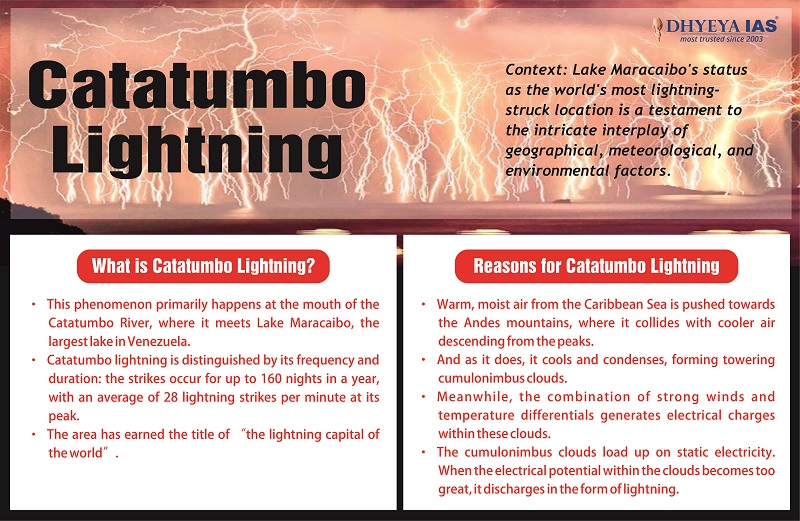Context:
Lake Maracaibo’s status as the world’s most lightning-struck location is a testament to the intricate interplay of geographical, meteorological, and environmental factors.
What is Catatumbo Lightning?
- This phenomenon primarily happens at the mouth of the Catatumbo River, where it meets Lake Maracaibo, the largest lake in Venezuela.
- Catatumbo lightning is distinguished by its frequency and duration: the strikes occur for up to 160 nights in a year, with an average of 28 lightning strikes per minute at its peak.
- The area has earned the title of “the lightning capital of the world”.
Reasons for Catatumbo Lightning
- Warm, moist air from the Caribbean Sea is pushed towards the Andes mountains, where it collides with cooler air descending from the peaks.
- And as it does, it cools and condenses, forming towering cumulonimbus clouds.
- Meanwhile, the combination of strong winds and temperature differentials generates electrical charges within these clouds.
- The cumulonimbus clouds load up on static electricity. When the electrical potential within the clouds becomes too great, it discharges in the form of lightning.







